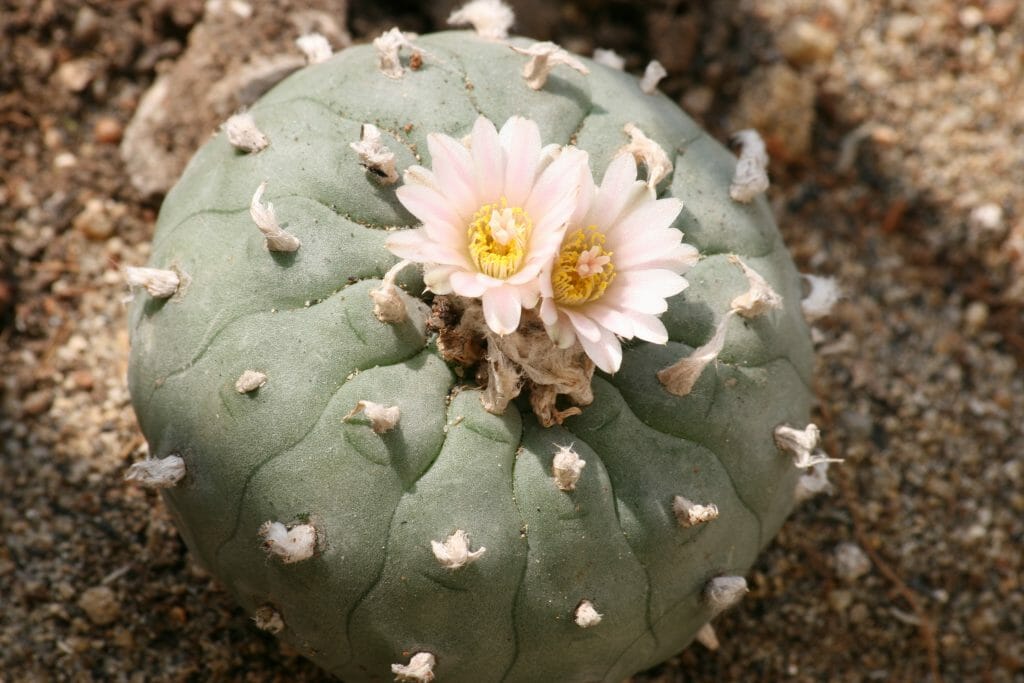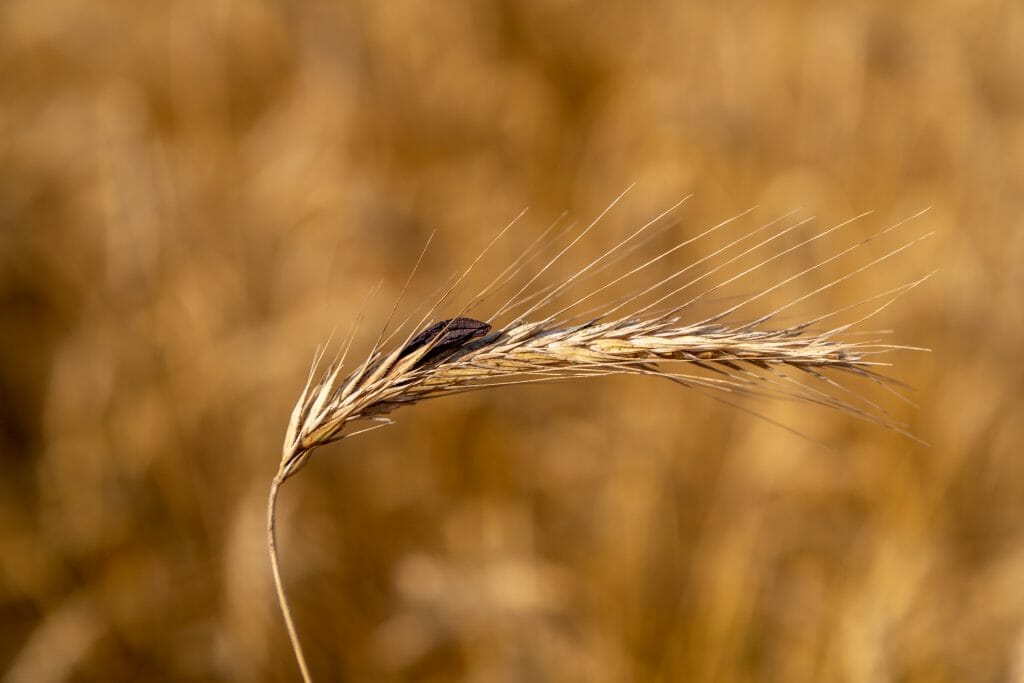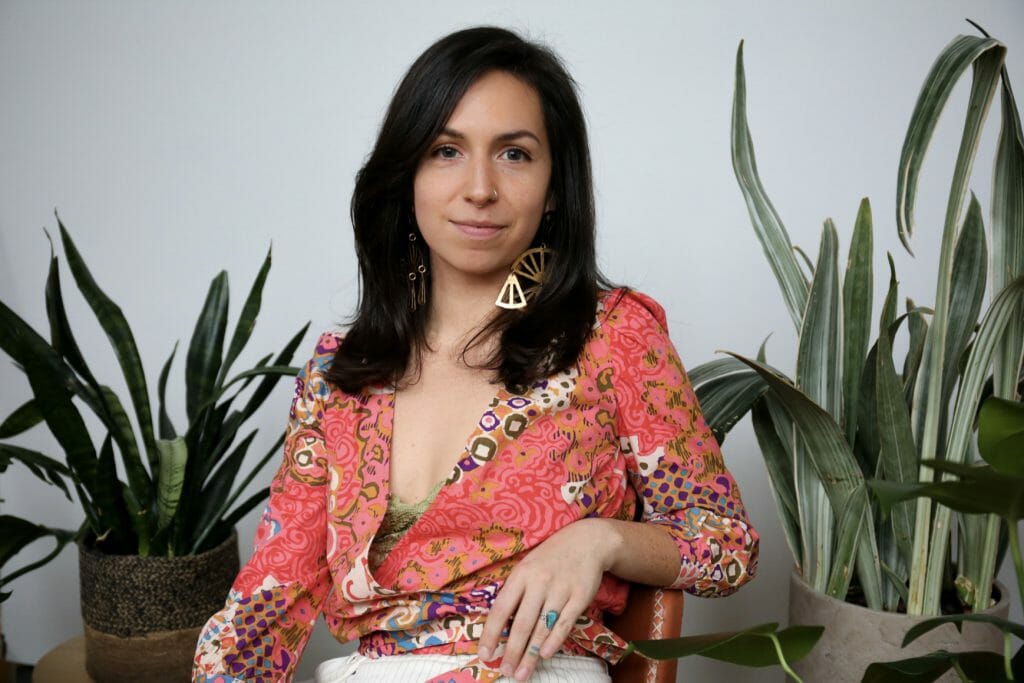By Rebecca Martinez
Defining sacred reciprocity, exploring the historical use of psychedelics, and establishing ways to give back to the communities who have lost the most holding this ancient wisdom.
Nature exists in a dynamic balance of interconnected relationships and exchanges. When more is taken than returned, the results are depletion, imbalance and system collapse. Many of us in the Global North have the advantage of enjoying psychedelics simply by purchasing them or receiving them as a gift. We are no longer in direct relationship with their roots or required to know where they came from, who grew them, or how they were sourced and produced. We do not bear the historic or contemporary burdens carried by those for whom entheogens are integral to their way of life.
The psychedelic movement is surging, in part because many of us have had the privilege of direct, life-altering experiences with these substances. These medicines, whether grown or synthesized, give generously, often in the form of healing, wonder, reconnection, play and illumination. But they don’t exist in a vacuum. Thankfully, they also offer the capacity for openness—and this unlocks a door to a more nuanced and responsible conversation about where our medicines come from and the impacts of our participation in what has become, for better or worse, a global market.
Just as being good stewards on this Earth requires us to know the stories behind our food, clothing, fuel and devices, we also have a calling to ask deeper questions about psychedelics. What don’t we know about the places, cultures, ecologies, peoples, and complex histories associated with the healing modalities we venerate? In asking these questions, we can uncover practical and meaningful ways to contribute to a culture of reciprocity, sustainability and integrity, toward the benefit of all. Then we can begin to see how this reciprocity lays the groundwork for collective healing.
Sacred reciprocity offers an opportunity to help restore balance to a presently imbalanced system of extraction amidst the global expansion of psychedelics.
Reciprocity requires an exchange of value, to be sure—but it should be a meaningful contribution to which we bring our whole selves, rather than simply a bill that we pay.
What Is Sacred Reciprocity?
Sacred reciprocity is the heartfelt exchange, gratitude, and acknowledgment for everyone and everything that sustains us. In psychedelics, it is a call for those who consume plant medicines to give back meaningfully to the communities and lineages who have preserved these medicines for generations. Indigenous communities bear the impact of the expansion, along with, in many cases, oppression from local governments.
The concept of sacred reciprocity comes from the Quechua word, ayni. Quechua is the Indigenous language of the ancestral peoples of the Andes, specifically Peru. Ayni is a principle of receptivity and gratitude, marked by a lifestyle of giving back in an inhale-exhale type relationship with the natural world.
Even those who consume only lab-based substances can participate in sacred reciprocity through a number of practices detailed here.
The History of Indigenous Psychedelic Use
Here’s a quick and dirty history lesson.
So, where and from whom do our medicines come? What is their traditional use? The following list is by no means exhaustive, and it’s important to remember that many entheogens are found throughout multiple continents and their practices vary between lineages. Additionally, much history has been lost and erased through the process of colonization. We recognize the unnamed groups and honor their heritage from which modern life has been severed.
Psilocybin

Psilocybin mushrooms have confirmed Indigenous roots in Central America, most notably the Mazatec people of Oaxaca, Mexico (recall the oft-told tale of Maria Sabina and R. Gordon Wasson), as well as the Mixtec, Nashua and Zapotec peoples.
It has been theorized that ancient Greeks used a combination of psychedelic mushrooms and ergot fungus in their ceremonial brews. Evidence of ceremonial mushroom use has also been found in Africa, with Algerian cave paintings dating back 9,000 years and psilocybe mushrooms found in Central Africa and South Sudan.
Modern Mazatec people have spoken of the “Hippie Invasion” of the ‘60s and the way the commodification of sacred mushrooms reshaped their communities. Learn more about Mazatec Perspectives on the Globalization of Psilocybin in this article from Chacruna Institute.
Ayahuasca
Ayahuasca, also called caapi, yajé, or yagé, is a ceremonial drink made from the stem and bark of the Banisteriopsis caapi vine and the leaves of Chacruna (Psychotria viridis) or other botanicals. It was first formulated by Indigenous South Americans of the Amazon basin, particularly modern day Brazil, Peru, Colombia and Ecuador. In 2010, a 1,000- year old bundle of shamanic herbs with ayahuasca was found in a cave in Bolivia. Ceremonial use for the Shipibo-Conibo people does not always include chacruna leaves, which contain DMT.
While the Shipibo people are the most well-known tribe associated with ayahuasca medicine, close to 100 distinct Indigenous groups use ayahuasca. The global expansion of ayahuasca tourism (and the Western emphasis on visions and DMT) has led to overharvesting, deforestation, violence, non-Indigenous owned retreat centers and competition between shamans.
In addition, deforestation in the Amazon has reached record highs, which has a global impact on climate instability. Yet, a 2020 study found what many First Nations people have often said and may seem obvious: Collective Indigenous property ownership reduces deforestation and protects human rights, as well as cultural and biodiversity.
Peyote

Peyote is a sacred cactus native to what is now known as the American Southwest, Mexico and Peru. With a human-plant relationship dating back 10,000 years, this ceremonial cactus has been used in rites of passage and annual pilgrimages by Native American and Mexican Indigenous groups for millennia and is inseparable from cultural heritage for many tribes, including the Wixaritari, Raramuri, Yaqui and Cora peoples.
Peyote contains mescaline, a psychoactive substance also found in Huachuma (San Pedro cactus). For the last century, Indigenous groups have fought convoluted government policies, environmental degradation, private land ownership, poaching, mining, and urbanization.
The Indigenous Peyote Conservation Initiative is a collaborative effort to preserve peyote and ensure the survival of this sacred practice for generations to come. Learn more here.
Huachuma
Known as the grandfather of entheogens, Huachuma (which came to be known as San Pedro after the Spanish Invasion) is a cactus native to Peru and Bolivia. Its use can be traced back 4,000 years. With roots in the Andes, this medicinal plant is associated with the Chavín culture, which laid the foundations for the Inca civilization. Stone temple slabs dating back to 1,300 B.C. show a figure holding a huachuma cactus.
Huachuma contains mescaline, and while it is legal in the United States to grow the cactus for ornamental purposes, consuming mescaline is illegal. Because it grows so much faster than peyote and is more widely available, conservation and Indigenous rights advocates recommend that those who feel called toward a relationship with mescaline choose huachuma rather than peyote. In this way we can preserve peyote in solidarity with the Native American communities for whom it is a sacrament.
Rapé
Tobacco is one of the oldest and most important shamanic medicines in the Americas. It is impossible to separate Indigenous history in the Americas from the ceremonial use of tobacco, known as Mapacho. Rapé (also called Hapé or Rapéh) is a form of sacred Amazonian snuff tobacco. It is made by combining dried tobacco leaves (Nicotiana Rustica) with sacred tree ash and other botanicals and grinding it into a dust-fine powder. Blends are distinct from tribe to tribe and the shamanic process of making rapé can take several weeks. It is known for its grounding and stimulating qualities.
Tobacco is not prohibited in most of the world the way other entheogens are. However, this open legal market has created other concerns. In recent years, an explosion in global interest in rapé has resulted in many white-owned “shamanic supply” businesses popping up online, selling rapé and other Amazonian medicines on web stores and Instagram. It is wise to dig deeper when companies claim they are in partnership with local tribes or have a “trusted source.” Keep in mind that “a portion of proceeds returned to the tribes” and “mutually beneficial relationship” are undefined and potentially exploitative claims and fair trade practices aren’t always readily enforced.
Kambo
Kambo, also known as toad medicine, is a controversial ritual. Historical use of kambo is very different than the modern practice. Hunters in the Matsés tribe of Peru would coat their blow darts with the frog poison, believing that this purified the animal they shot. They would then bring the animal back to their village to be sacrificed and eaten. Kambo is quite different than other Indigenous medicines; the modern practice, as Westerners know it, seems to be a new invention. The first human use of Kambo (for sharpening the skills of hunters) was documented in 1925 by French missionaries. It was popularized in the 1980’s, by investigative journalist Peter Gorman, and numerous patents were also filed at this time.
Sourcing kambo involves first extracting the peptide-rich poison from the body of the Giant Leaf Frog (Phyllomedusa bicolor). This is done by catching the animals and then stressing them so that they secrete their poison, either by stretching their limbs or holding them over a fire. A stick is then used to scrape the gluey secretion from their skin and save it for later use. This biological material is shipped around the world to practitioners who promote it as a detoxification and immunity-building medicine.

Kambo practitioners burn holes in the skin of their clients and then apply the frog secretions to the wounds. The purging and immune response which follows is believed to cleanse the user of ailments and negative energies.
The Giant Leaf Frog is currently threatened by climate change and habitat loss (though it is currently listed as “Least Concern”). Furthermore, patenting kambo is yet an example of bioprospecting, which is a common practice in the incredibly diverse rainforests of the world and has major impacts on the Indigenous communities from which these molecules are sourced.
Ibogaine
Ibogaine comes from the root bark of the iboga shrub, which is native to Gabon in central West Africa. It has been used for centuries by people of the Bwiti religion as a rite of passage and initiation. The preservation and expansion of the Bwiti tradition and iboga medicine has a complex history involving French occupation, displacement, intertribal violence, religious suppression and political marginalization.
Medicalization of ibogaine began in the late 1930s, with decades of intermittent but promising research into its potential to treat substance use disorders, particularly opiate addiction. Its legal status remains complicated and restricted in many countries.
Global enthusiasm about iboga’s healing potential has created problems not unlike those faced by Indigenous Americans with peyote, such as difficulty sourcing medicine for their traditional use and ongoing political struggle to protect their practices.
Wild iboga is currently endangered in Gabon due to poaching, climate change, illegal export to satisfy international demand, urbanization and habitat degradation. As an alternative, iboga can be grown sustainably in greenhouses and farms, and advocates also point to the option of using semi-synthetic ibogaine from the voacanga tree instead.
DMT
DMT has been called the spirit molecule. This powerful, naturally occurring entheogen is concentrated in modern ayahuasca brew, thanks to the presence of chacruna leaves. It is also produced endogenously by a variety of plants, fungi and animals, including toads, salamanders, rats, shrubs, seeds and amanita mushrooms. Some have theorized that the human body even produces DMT at birth and death, and it has been found in the urine of people experiencing schizophrenia and other psychoses. DMT is structurally similar to LSD.
Due to conservation concerns, many in the movement advocate for the use of synthetically derived DMT to avoid contributing to habitat loss and extinction as interest and demand for this medicine grows.
LSD

While tiny squares of paper blotted with synthesized LSD and printed with cartoon characters may seem the farthest thing from nature, it was first discovered by Swiss chemist, Albert Hoffman, working with ergot, a fungus that grows on rye.
Lab-Made Companions
Synthesized compounds such as LSD, MDMA, ketamine, 2C-B and others need not be excluded from the list of substances deserving of our gratitude. When we partake with intentionality, the journeys give generously back to us. Sacred reciprocity can be viewed as an essential element of psychedelic experience, regardless of the catalyzing substance.
Qualities of Sacred Reciprocity
Now that we have some context for the historical and contemporary issues surrounding entheogens and psychedelic medicines, let’s look at some guiding lights for giving back meaningfully.
Relational Reciprocity
Sacred reciprocity comes with the humble energy of the ask. To seek consent not only from the medicine itself, but also the elders and medicine keepers, is to set aside one’s own agenda in the interest of the larger good. Are we willing to take no for an answer? This is a nuanced question and cultural considerations are different with every entheogen and context. For example, partaking in ayahuasca may have different steps for accountability than partaking in home grown mushrooms. This is why moving at the speed of trust and cultivating lasting relationships is a responsible approach.
Proactive Sacred Reciprocity
Rather than an afterthought, sacred reciprocity can be woven into the entire psychedelic process, from decision making and intention through to integration and daily life. Think ahead and be intentional with how you want to give back. Involve your peers in this shared effort as well, and watch a culture of integrity bloom and flourish before your eyes.
Practical Reciprocity
When we talk about reciprocation, it’s important to focus on impact over intention. How does this action directly benefit the people, ecologies, and futures we seek to support? This is why we recommend backing organizations without intermediaries so that good intentions are not lost in translation.
Grateful Sacred Reciprocity
Every great medicine journey begins with gratitude. Whether in a deeply healing or rambunctiously festive environment, pausing for a few breaths or words of gratitude can have major impact on the ways we relate to the substances we consume, what we bring to the experience, and what we come away with. Thank the medicine, yes— but also thank the ancestors, wisdom keepers, protectors, ecologies, and chemists!
Humble Reciprocity
Readiness to listen and learn is a powerfully healing force. The forces of colonialism, which could have wiped out these medicines completely, are rooted in ideas of superiority and entitlement. Unwinding these attitudes is a process that comes full circle within the very medicine spaces that have been protected for generations.

Non-Transactional Reciprocity
The concept of ayni is one rooted in a living, dynamic relationship. If we fall into a guilt-driven, transactional mindset of repetitively taking and repaying, we begin to lose the heart of ayni. Reciprocity requires an exchange of value, to be sure—but it should be a meaningful contribution to which we bring our whole selves, rather than simply a bill that we pay.
Informed Sacred Reciprocity
Recognizing the true history of entheogenic medicine is a tough pill to swallow. We all benefit from the sacrifices of Indigenous groups who have preserved their heritage in the face of colonialism, genocide, religious persecution, criminalization and exploitation. Medicine work calls us to awareness. Awareness calls us to relationship. Relationship inspires action. This is a healthy cycle of responsibility that can have far reaching benefits for global healing, if we’re willing to engage with it.
Understanding also enables us to spread knowledge and context within our communities and gradually shift the culture at large.
Multi-faceted Reciprocity
Reciprocity considers the interconnected social, economic, ecological and spiritual factors at play within the global expansion of psychedelics. Offerings of gratitude seek to edify multiple facets of the movement—for example, financially resourcing native communities hit hard by COVID-19 and spreading awareness of entheogen conservation issues among your social circle are tangible ways to give back.
Committed to Sacred Reciprocity
To step into a reciprocal relationship with entheogens means stepping into the right relationship with the Indigenous communities where they originate. It is difficult to imagine an ethical way to consume psychedelics while ignoring the ongoing struggle of the very groups who have shared them with us.
Commit to supporting indigeous survival, thriving and self-determination. This includes the return of power, agency and resources to the original people of the land. The common psychonautic reprise that “we are all one” and desire to “stay out of politics” becomes difficult to justify while directly enjoying the traditions these people have made sacrifices to defend.
Complex global issues are at play here, so nuanced and open-ended relationships are the name of the game. We have to let go of short term solutions and quick fixes. This is a process of unlearning as much as learning—but the alternative is an old story in which we in the Global North unconsciously repeat the harms of the past in more subtle, but equally detrimental ways.

Ways To Give Back
- Commit to learning and honoring the lineage and preservation of medicines you consume (studying and sharing this article is a solid start).
- Financially support Indigenous-led organizations* The Indigenous Reciprocity Initiative, hosted by Chacruna Institute, offers a directory of community-determined projects which you can support directly. Check it out here.
- Use medicines sparingly. These substances are powerful, limited and rapidly declining. Consider ways to spread out your journey work, and make the most of each experience through self-responsibility, preparation and integration.
- Grow your own medicines and choose medicines that can be sustainably grown or produced.
- Dig into your own Indigenous history. Get into relationship with your ancestry through family, food, research, community and focused journey work. Solidarity reaches deeper when it hits close to home.
- Advocate for drug policy reform and work to understand systems of oppression in your community.
No money? Use what you have.
- Volunteer time. Many organizations and projects could use help with web-based marketing, fundraising and awareness efforts.
- Talk with loved ones about sacred reciprocity.
- Cultivate practices that are good for the Earth and its ecosystems in your diet, travel, and consumption habits.
- Do journey work specifically focused in prayer for Indigenous protection and thriving.
- Commit to the path of interconnectedness. Embrace systems thinking over simplistic solutions.
*The Chacruna Institute makes an important point here: “It is vital that members of the psychedelic community help support Indigenous groups and the traditional ecological knowledge they practice. Many organizations and individuals have a genuine desire to help, but struggle to find ways of connecting directly with local communities. Sometimes, the only option is donating to massive non-governmental organizations (NGOs) based in Western countries. Many who care about the environment and its interdependency with Indigenous lives are aware that money given to large NGOs often fails to reach the people on the ground due to the large infrastructural costs needed to run these organizations. Yet, small grassroots groups doing the most impactful work often labor to connect with people wanting to offer direct support through donations. For this reason, Chacruna has created the Indigenous Reciprocity Initiative of the Americas.”
Conclusion
With so many converging forces in the psychedelic movement, it is refreshing—audacious almost—to envision a community-led path forward that isn’t shaped by “corporadelics” or pharmaceuticals. The culture of sacred reciprocity is a first step toward healing the traumas of the past and present. The potential of the psychedelic resurgence multiplies when we embrace the inherent value of our roots and the lives that sustain this medicine.
Sacred reciprocity is a worthy cause. It requires humility and dedication. There lies before us a chance to live out a new story—one that our descendants will no longer have to spiritually bypass in order to fully enjoy their trip.
Resources:
Indigenous Reciprocity Initiative
Sacred Reciprocity Toolkit from EntheoNation
Decolonize First: Downloadable workbooks and mini-courses in decolonizing
Boom Festival 2019 about Sacred Reciprocity Video presentation from Ismail Ali & Lorna Liana
About the Author

Rebecca Martinez is a Xicana writer, parent and community organizer born and raised in Portland, Oregon. She is a co-founder of the Fruiting Bodies Collective, an advocacy group, podcast and multimedia platform addressing the intersections between healing justice and the psychedelics movement. Rebecca served as the Event & Volunteer Coordinator for the successful Measure 109 campaign, an unprecedented state initiative which creates a legal framework for psilocybin therapy in Oregon. She is also the author of Edge Play: Tales From a Quarter Life Crisis, a memoir about psychedelic healing after family trauma, spiritual abuse, and police violence. She serves on the Health Equity Subcommittee for Oregon’s Psilocybin Advisory Board as well as the Board of Advisors for the Plant Medicine Healing Alliance.

